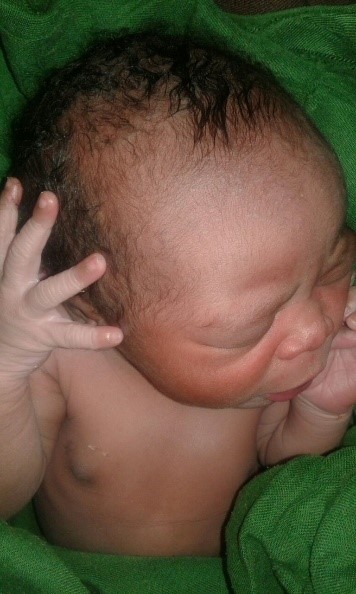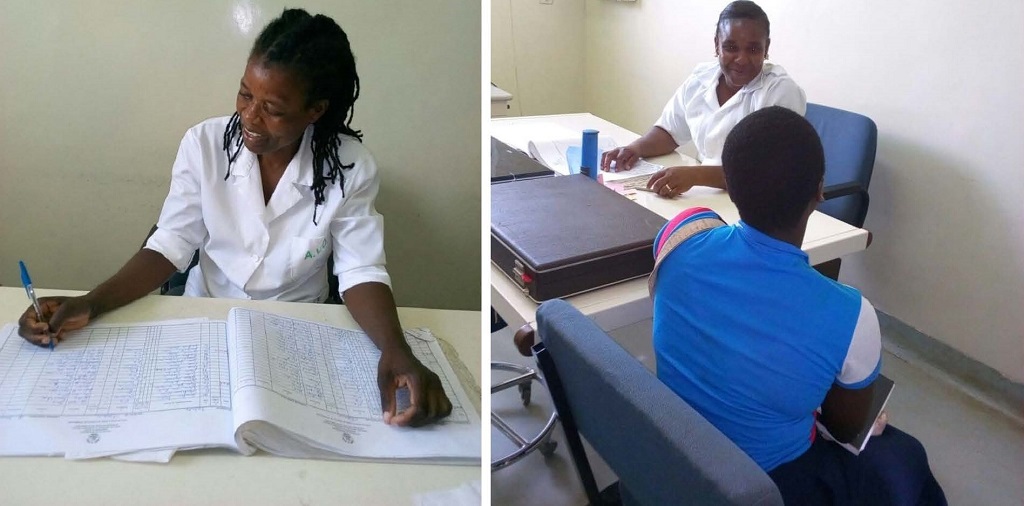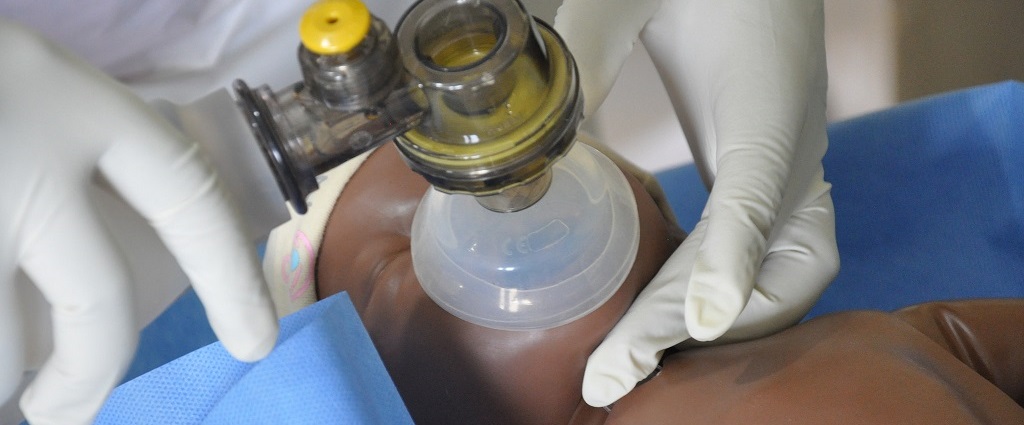This post also appeared on the Healthy Newborn Network website.
Sofala Province, Mozambique – It was midafternoon when 21-year-old Rosita Filipe arrived at Muxungué Rural Hospital. Pregnant for the first time, she was transferred to the hospital to have access to its operating room and blood bank. Her obstructed labor had ceased to progress at the health facility where she was initially taken. Now in labor for more than a day, she was weak and in pain.
The ambulance carrying Filipe, an escort nurse, and a relative was met by Nurse Deogrecia Chuquela and and Dr. Cristina Santana, who quickly examined her in the delivery room. It was clear that the large size of the fetus prevented a normal delivery. And when Chuquela listened to the baby’s heart rate – holding the wide end of a pinard stethoscope against Filipe’s abdomen – she could hear that it wasn’t normal.
Immediately, a team led by Dr. Santana did a cesarean delivery and the baby was born. But the danger for Filipe’s newborn wasn’t over yet: as soon as Chuquela held the baby boy, she knew he was not breathing. The Apgar score (for activity, pulse, grimace, activity and respiration) indicated an urgent need for the baby’s resuscitation.
“We stimulated the newborn, but he did not cry or move. He seemed dead,” she said.
In fact, he was alive, but suffering from birth asphyxia, a leading cause of newborn death in Mozambique, and the cause of one-quarter of all neonatal deaths globally. And he had only moments to be saved.

While Dr. Santana continued to care for Filipe in the delivery room, Chuquela worked diligently to resuscitate the newborn using the Helping Babies Breathe (HBB) approach. HBB focuses on the first minute of life — within this “golden minute,” a baby must be breathing well or should be ventilated with a bag and mask.
Chuquela followed the HBB steps to stimulate breathing. She thoroughly dried the newborn and rubbed his back. When he didn´t start breathing spontaneously, she placed him on a clean, warm, firm surface. Opening his airway and correctly positioning his head, she then used a suction device to clean his nostrils and mouth. She began positive-pressure ventilation with room air using a neonatal Ambu bag and mask to stimulate his breathing. Chuquela assessed the adequacy of ventilation by checking if the baby’s chest was rising at regular intervals and – after one minute of effective ventilation – monitored his heart rate.
A short time later, the baby began breathing by himself and his vital signs were stabilized. She placed him under a heater with oxygen for two hours.
Before being trained by MCSP to manage newborn asphyxia through HBB, this story may have had a very different ending. Chuquela admits she was scared after realizing the baby wasn’t breathing, but “I immediately had to put in practice what I learned to save the newborn’s life.”

This training is one of many approaches MCSP is using to increase the capacity of Mozambique’s providers to manage complex newborn health issues. The Program developed a comprehensive package of related interventions and is working closely with health authorities and partners to roll them out. MCSP also supplied 86 project-supported facilities in Nampula and Sofala Provinces with newborn health materials, including: neonatal suction devices; newborn resuscitation kits; manual and electric vacuums; oxygen manometers; infant warmers; space heaters for delivery rooms; newborn suction catheters; measuring tapes and boards; infant scales; phototherapy units; and thermometers.
All of these efforts point to one hope: when an emergency arises, trained providers will have the knowledge, skills and materials to respond as they did at Muxungué Rural Hospital and lives will be saved.
“We were happy to see that Nurse Chuquela was able to put into practice what she learned in the resuscitation trainings to save Rosita’s baby’s life,” said Isabel Massango, MCSP’s Maternal and Neonatal Health Officer Technician in Mozambique.
As for Filipe, when her son was brought to her a few hours after delivery, she couldn’t hide her smile while breastfeeding him for the first time. After two days in the hospital – for monitoring, counseling on breastfeeding, and help with Kangaroo Mother Care – both mother and baby were sent home, happy and healthy.

